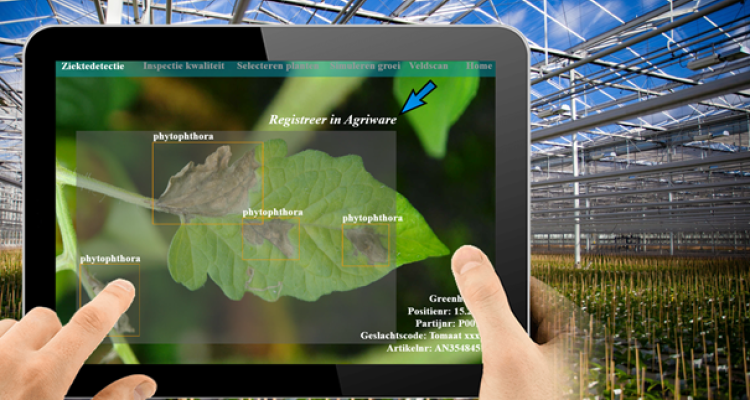
Thesis subject
Augmented Reality in horticulture: green glasses instead of green fingers
Labor is one of the biggest challenges in horticulture. More than 25% of all costs of many horticultural companies is labor-based. Temporary staff is widely made use of, and personnel with horticultural expertise is becoming increasingly difficult to find. With the help of Augmented Reality (AR), the people involved do not necessarily need to be experienced and with green fingers.
However, AR applications are still in an experimental phase in horticulture. For example 3D glasses like the Hololens are perceived as futuristic and too expensive, which is a barrier to large scale use. More insight is needed in how AR can advance horticulture, based on the development innovative and feasible prototypes to demonstrate the benefits.
Level: MSc
Research area/discipline: Augmented Reality, Horticulture
Prerequisites:
Short description:
Augmented Reality (AR) is a live image of reality to which digital information is added in a, for instance, smartphone, tablet or smart glasses, e.g. a HoloLens. The power of many AR applications lies in the consolidation of different technologies such as, automated image analysis with Machine Learning, integration of data from various sources, and mobile apps. AR mainly adds visual user interaction with the real-life environment.
Some examples of potential AR applications in horticulture:
- Making the invisible visible: AR can visualize data, on exact locations or even specific plants, fed from sensors, machines and business software.
- Working guided and hands-free: AR makes it possible to automate specific horticultural knowledge and then guide employees step by step in their work.
- Adding intelligence: for example by using Machine Learning an AR app can, for example, instantly recognize diseases, plant maturity, and quality categories.
- Anticipating by simulating: for example by linking AR to crop growth models or quality prediction algorithms.
- Place plants in a different environment: for space planning in a greenhouse or virtual design of a living room, office or garden, taking into account the optimum conditions of plants.
- Let an expert or clients look over your shoulder: let people watch along real-time via internet, for cultivation advice for example.
- Remote control for your nursery: by integrating it with climate, irrigation, ventilation or lighting systems.
Objectives:
The main objective of this research, which may comprise multiple thesis projects, is to analyse how AR can advance horticulture and to develop innovative AR applications to demonstrate the benefits. Specific research questions to be addressed are numerous and may include:
- What are existing AR applications in horticulture and what are valuable future application?
- What are the drivers and barriers for successful AR application in horticulture?
- Which technological architecture is required? Including: which devices, e.g. specific type of smart glasses or tablets/smartphone, AR development platform, integration with ERP, sensors, ML algorithms, etc.
- How to develop and implement Proof of Concept systems of AR in horticulture?
This thesis topic is prepared together with Mprise Agriware, a software company that provides business software for horticultural producers, including for example (international) seed producers, plant breeders, propagators and growers. Thesis projects for this topic can also be done in collaboration with other companies that are active in horticulture.
Required skills/knowledge:
Relevant literature:
- Verdouw, C., 2019. Augmented Reality in horticulture: green glasses instead of green fingers. Mprise Agriware, Veenendaal, blog, https://www.mprise.nl/en/agriware-blogs/augmented-reality-in-horticulture-green-glasses-instead-of-green-fingers.
- de Oliveira, M. E., Corrêa, C. G., 2020. Virtual Reality and Augmented reality applications in agriculture: a literature review, 22nd Symposium on Virtual and Augmented Reality (SVR), Porto de Galinhas, Brazil, 2020, pp. 1-9
For more information:
Cor Verdouw (cor.verdouw@wur.nl)